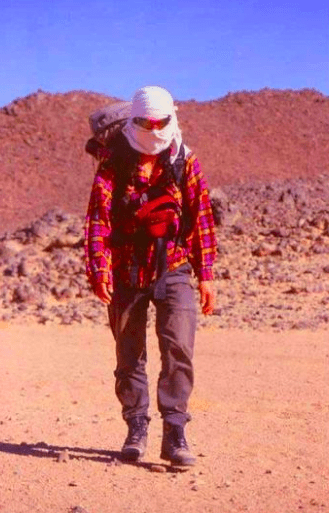I felt compelled to write this article on the causes, effects and dangers of Rhabdomyolosis as this is becoming an increasingly common problem among marathon runners and even more so among ultra marathoners especially those competing in hot climates. I have experienced this condition more times than I care to remember over the course of my long and extreme career and now it seems I am paying the price for it with kidney damage.
Rhabdomyolosis in the case of runners (exertional Rhabdomyologis) is due to strenuous physical activity over a prolonged period of time which causes damage to the skeletal muscles, (Rhabdomyolosis can also result from other muscle breakdown issues like crush injuries, infections or genetic disorders but that is beyond the scope of this article). The muscles then break down and release toxic substances into the bloodstream. This is a common occurrence amongst runners who are doing ultra marathons and even marathons, in fact, some studies suggest that it’s more the rule than the exception, with some estimating up to 80% having some degree of rhabdomyolysis by the end of the event.
So what is actually happening, how is it diagnosed and how concerned should we be about it?
Diagnosis can be made by blood or urine samples which can show Creatine Phosphokinase (CPK) levels rising to above 10,000 U/L (normal is around 200 U/L). CPK enzymes are found in the blood in relation to the proportion of muscle cells that have been broken down i.e. the more muscle cells damaged the more the CPK. CPK isn’t of itself harmful but it provides a good marker of what is going on and a good marker of other more troubling substances namely myoglobin which is a protein that can block and crystallise within the tubules of the kidneys leading to kidney injury and in rare cases even to acute renal failure.
The kidneys try to excrete these substances into the urine so another warning sign is when you see dark coloured urine or when you notice you haven’t urinated for a long period of time when you should have given your fluid intake and/or if you are noticing fluid build up in the body.
It would also appear to be exacerbated by extremely hot temperatures and dehydration in addition to the strenuous activity like the races I have done in say Death Valley, Gobi, the Australian Outback or the Sahara.
Another risk factor is taking pain killers in particular NSAID’s or non steroidal ant-inflammatories (see my blog post on the dangers and downsides of taking these during racing and training The dangers of NSAID's)
Other risk factors include being poorly trained and unfit for the event undertaken, having had a recent infection or virus, hyponatremia or too much fluid relative to electrolytes in the body may also be a risk factor.
Other symptoms can include bloating, back pain, severe muscle pain (who doesn’t have that during an ultra?)
If you suspect you have Rhabdomyolysis please if at all possible, pull out of the race. There is no sense in risking permanent injury or even death in a worst case scenario for the sake of any event. If you damage your kidneys in this way it may come right in a day or two or it may not and the risks are very serious things like toxin and waste product build up, electrolyte imbalances which can cause heart problems (I have also suffered this, having a horrific Tetany seizure from extremely low potassium levels but that’s a topic for another blog) or even cardiac arrest or hepatic inflammation which means a swelling of the liver which can cause liver damage, which means more filtering and detoxing problems. The knock on effects can be devastating.
So what you can do to avoid this?
Drink the right amount for the exercise being undertaken, taking into consideration your body size and the temperature - not too much or too little, have the right electrolyte balance, don’t exert yourself in the extreme, don’t take NSAID’s and don’t race if you had a recent infection or virus. Keep an eye on your urine output and for signs of bloating and unusual muscle weakness.
If you have any of the symptoms seek medical attention as soon as possible and don’t be a hero.
Lisa
